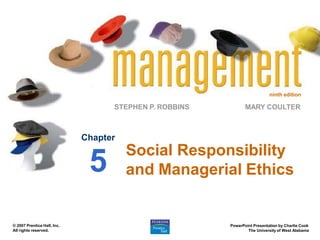This document outlines a chapter from a management textbook that discusses social responsibility and managerial ethics. It includes a learning outline that covers topics like defining social responsibility, the relationship between social involvement and economic performance, green management approaches, values-based management, and factors that influence ethical behavior. The chapter examines issues managers may face and provides frameworks for analyzing the social and ethical dimensions of business decisions.









































